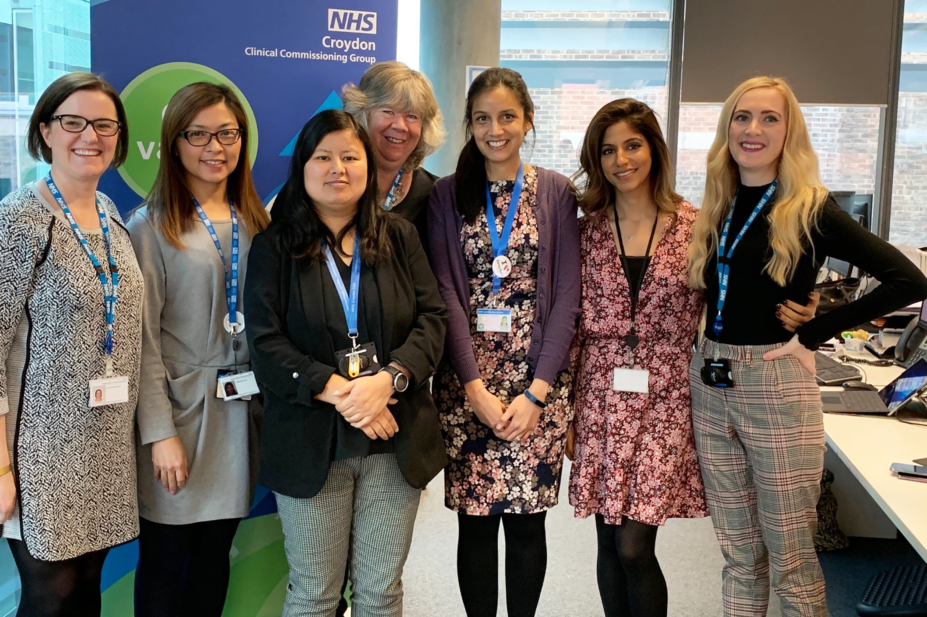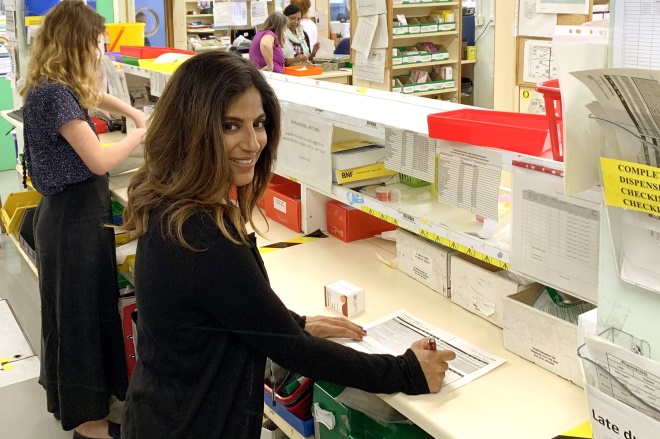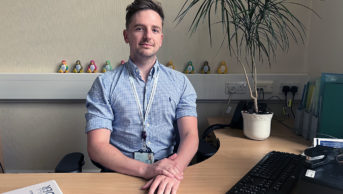
Shazia Karsan
Open access article
The Royal Pharmaceutical Society has made this article free to access in order to help healthcare professionals stay informed about an issue of national importance.
To learn more about coronavirus, please visit: https://www.rpharms.com/resources/pharmacy-guides/wuhan-novel-coronavirus

Source: Shazia Karsan
The support provided by the pharmacy team at Croydon University Hospital has been extremely valuable for redeployed pharmacist Shazia Karsan
I started my role as an integrated community network (ICN) pharmacist in 2018, as part of a commissioned service in Croydon, south London. This service is designed to address commonly identified problems across the primary and secondary care interface through collaborative working between health and social care — overcoming traditional boundaries.
However, at present, my team has been redeployed indefinitely to support the hospital pharmacy workforce during the COVID-19 pandemic. Despite having previous experience in secondary care, I still felt an element of anxiety associated with switching to a different sector and felt that I needed to refresh my hospital knowledge quickly.
The training I received to prepare me for this included a session on how to use the hospital computer systems, a week of shadowing on wards and completing in-house accreditations. While the training was not too difficult, it had to be completed at an accelerated pace owing to the circumstances. The hospital team recognised this and have supported us through, for example, checking in on us and encouraging us to ask questions whenever we are not sure about something.
08:30 — start
My day now involves covering a care ward for older patients at Croydon University Hospital, as well as continuing to provide my usual primary care service. We are able to manage this because we are not carrying out home visits or receiving as many referrals as before.
Planning and organising my day is challenging as the nature of covering a ward, especially during a pandemic, means I really do not know what to expect. This contrasts with my normal, more predictable role, where I usually have set meetings and home visits booked in.
Today, I start by working away from the ward — in an office in the pharmacy department. I identify newly admitted patients, reconcile drug histories, order medications and clinically screen ‘to take away’ orders using our electronic prescribing system. This helps limit the time spent on the wards; however, I will visit my ward if some of the tasks I need to complete require me to do so, such as needing to talk to a patient.
With my normal ICN role, interventions take a lot longer to be actioned, but I also get to follow through to see the outcome. Within the hospital setting, interventions typically happen a lot quicker, but I do not get to see the outcome post-discharge. Clinical judgement is important in both roles, but I feel I am able to work more autonomously within my ICN role owing to the rapport I have developed with other healthcare professionals.
On days when I am not working at the hospital, I work from home, which has become the norm for many of us in the profession. It has felt strange not seeing my colleagues every day and not being able to have face-to-face discussions; however, technology has allowed us to see one another and, therefore, keep morale up.
09:00
I attend the pharmacy team’s daily morning meeting, which was set up after it was recognised that team members, including myself, had apprehensions about encountering COVID-19 patients. In addition to the meetings, the management team has set up a COVID-19 box for staff members to anonymously raise any concerns. The support I have received since being deployed has been excellent and the guidance provided has allowed me to feel confident that I am keeping myself and my patients safe.
12:00
I have a lunchtime meeting with my wider ICN team, which consists of a GP, pharmacist, district nurse, social worker, network facilitator (meeting chair) and a personal independence co-ordinator from Age UK — a charity that supports older people.
We have not been disbanded during the pandemic because we support a vulnerable cohort of patients who are generally older, housebound patients with multiple comorbidities. These patients tend to have both health and social care needs.
Our meetings — which usually happen face-to-face — now occur virtually. I have had to adapt to conference calls and using collaborative software, such as Microsoft teams, to facilitate effective meetings.
We discuss topics such as how the team can adopt a different approach to providing support to patients. Most services, including the ICN pharmacy service, have switched to carrying out telephone consultations only for patients. Where our service previously involved a combination of remote consultations and home visits, we have now ceased all home visits unless they are deemed urgent by the team.
A shift from the norm has meant thinking laterally about how we support patients with medication-related problems. We have also faced other issues, such as arranging medicines deliveries for certain patient groups — for example, those who might be shielding.
13:30
I carry out phone consultations with patients from my ICN caseload in the afternoon. Patients are typically referred through our multidisciplinary team meetings (known as ‘huddles’) and upon discharge from the hospital. Referrals are for housebound patients that have potential or actual medication-related problems, such as polypharmacy or non-adherence that need to be addressed, and can come from any healthcare professional. As there are no home visits, I am contacting my patients more frequently to keep an eye on them and to ensure they are supported as much as possible.
Today, I speak to a patient who has had a recent transient ischaemic attack (TIA) and has not been adhering to her medication regimen as a result of poor cognition. To get a clearer picture of what is going on, I also speak with the patient’s daughter. It has been quite difficult to determine over the phone how some of my patients are taking their medicines. This has meant a lot of additional contact with family members, carers and nurses to address and resolve any issues.
I liaise with the district nursing team to support the patient with medicines administration as she is at high risk of having another TIA/stroke. I also signpost the patient’s daughter to relevant voluntary and support services.
15:30
Later in the afternoon, I help in the dispensary by checking dispensed items while ensuring that social distancing practices are maintained as a result of COVID-19. On the whole, the standard dispensing process has not changed much since the pandemic began.
17:00 — finish
Usually my working day ends at 17:00, but tonight I am volunteering as part of the new ‘End-of-life medicines supply’ service developed in Croydon. This provides prompt supplies of anticipatory medicines to terminally ill patients in the community to allow them to remain as comfortable as possible.
The service operates 24 hours per day, 7 days per week, and is run by pharmacy staff from Croydon clinical commissioning group and Croydon University Hospital on a voluntary basis. This differs from being on-call in a hospital as it focuses solely on urgent supply of anticipatory medicines.
Tonight’s shift is quiet, with only one request for an urgent anti-emetic agent.
Overall, the transition from primary care to secondary care has come with its anxieties, but has also been more seamless than I originally anticipated. I believe that this, in no small part, is owing to the team spirit and support shared by all healthcare professionals.
Although I enjoy the pace and interesting cases in secondary care, I do not currently have any plans to make the move back permanently. I have always wanted a role where I have more patient contact — community roles allow me to have this and follow up with my patients.
Box: Are you new to hospital pharmacy?
- Use resources available to you, such as trust guidelines and always ask questions if you are unsure. I have had to ask for help numerous times, particularly when learning about processes which differ between trusts. For example, when ordering stock and managing non-formulary items, out-of-stock items or controlled drugs;
- Familiarise yourself with the processes of how to manage a ward effectively — this will help you make the best use of your time. For example, work out how best to identify and prioritise new and discharged patients by determining who is at most risk of medicines-related harm;
- Take your time when completing tasks especially when screening drug charts. Pay particular attention to intravenous medications;
- Build a relationship with your ward-based teams as they are very helpful. This will also allow them to identify you as the pharmacist should they have any medicines-related questions. I have found that the ward staff ask more questions when I am present.
Additional information
The Royal Pharmaceutical Society has several resources to help pharmacy professionals during the COVID-19 pandemic:
